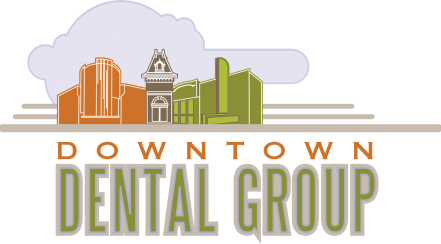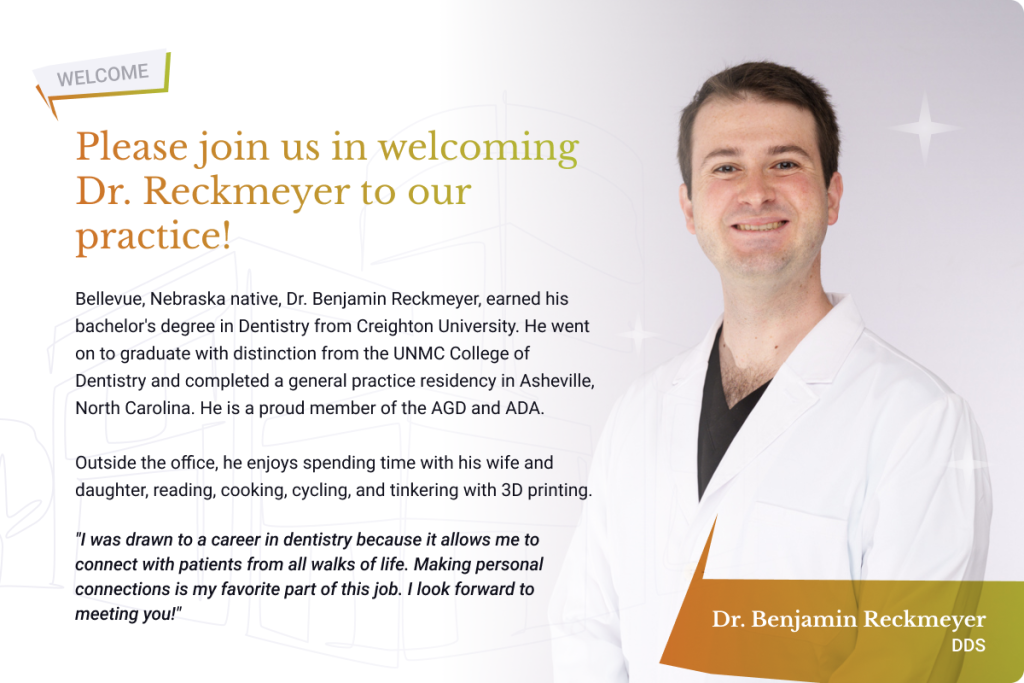Surgical Tooth Extraction
A Patient’s Guide to Surgical Tooth Extraction
If a dentist has recommended surgical tooth extraction, you may be wondering about the procedure, how it works, and the aftercare procedure. Although many people are nervous going into their extraction, Dr. Juliana Hall is skilled at pain management and performing the surgery effectively and efficiently.
To schedule an appointment with our dentist in Manhattan, contact our dental office today at (785) 776-0097.
What Is Surgical Tooth Extraction?
Surgical tooth extraction is a routine dental procedure involving the removal of a tooth from its socket in the jawbone. This type of extraction is typically necessary when a tooth can’t be easily removed with forceps, such as when it’s impacted, broken, or has extensive decay. Wisdom teeth removal is often a surgical extraction procedure. The procedure is usually performed with the patient under general anesthesia or local anesthetic and often takes as few as a single visit to the dentist.
Why Dentists Recommend Surgical Tooth Extraction
There are several reasons why you might need a surgical tooth extraction. The most common is an impacted tooth, meaning it’s stuck beneath the gum line and can’t emerge on its own. Impacted teeth can be painful and lead to infections and other dental problems.
Additionally, a tooth may need surgical extraction if it’s severely damaged or decayed and can’t be saved through other treatments or removed with simple tooth extraction. Finally, surgical tooth extraction may be necessary if you’re undergoing orthodontic treatment and need a tooth removed to make room for other teeth.
The Surgical Tooth Extraction Process
The procedure begins with your dentist administering a local anesthetic to numb the area around the tooth. In some cases, dental sedation or general anesthesia may help the patient relax or if multiple teeth need extracting.
The dentist will make an incision in the gum tissue to expose the tooth and surrounding bone. They’ll then use special instruments to loosen the tooth from the socket and remove it carefully. In some cases, the tooth may need to be divided into smaller pieces to make it easier to remove.
Once the tooth has been extracted, the dentist will clean the area and place stitches to close the incision in the gum tissue. A gauze is then placed over the extraction site to help stop bleeding and encourage blood clot formation, an essential part of healing.
Surgical Tooth Extraction Aftercare
Aftercare is a critical part of the healing process following a surgical tooth extraction. Here are some steps you can take to ensure a speedy and successful recovery:
- Bite down on gauze: After the procedure, your dentist will place gauze over the extraction site to help stop bleeding. Bite firmly on the gauze for at least 30 to 45 minutes, replacing it with a fresh piece if necessary.
- Apply ice: Applying an ice pack to your cheek can help reduce swelling and discomfort. Apply it for 10 minutes at a time with a 20-minute break in between for the first 24 to 48 hours.
- Avoid strenuous activity: Avoid exercise, heavy lifting, and other rigorous activities for the first few days after the surgery.
- Take medication: Take any prescribed pain medication and antibiotics as directed by your dentist. Over-the-counter pain medication like acetaminophen or ibuprofen can also help manage pain.
- Avoid smoking and drinking alcohol: Smoking can delay healing and increase the risk of infection. Drinking alcohol can also delay healing and may interact with your medication.
- Rinse with saltwater: Beginning 24 hours after the extraction, gently rinse your mouth with warm salt water several times a day to help reduce swelling and prevent infection.
- Stick to soft foods: Avoid hard or chewy foods that may irritate the extraction site. Stick to soft foods like soup, yogurt, mashed potatoes, and smoothies.
- Follow up with your dentist: Make sure to attend any follow-up appointments with your dentist and follow their instructions for recovery.
Frequently Asked Questions
Does insurance cover surgical tooth extraction?
In most cases, surgical tooth extraction is covered by dental insurance. However, it’s important to check with your insurance provider to understand your coverage and any out-of-pocket costs you may be responsible for. Your dentist can help you learn more about your benefits before the procedure.
What can I expect during recovery from a surgical tooth extraction?
Patients can expect some swelling and discomfort in the days following the procedure, as well as some bleeding from the extraction site. Your dentist may recommend follow-up appointments to monitor healing and address any complications.
How long does it take to recover from a surgical tooth extraction?
Most patients can expect to return to normal activities within 48 to 72 hours. However, recovery times can vary depending on the individual patient and the complexity of the extraction.
Are there any risks or complications associated with surgical tooth extraction?
As with any surgical procedure, there’s a risk of bleeding, infection, nerve damage, and other complications. However, these risks can be minimized by following your dentist or oral surgeon’s instructions for aftercare.
Safe Surgical Tooth Extractions
Surgical tooth extractions are a common dental procedure performed when a tooth cannot be easily removed using traditional extraction methods. This procedure involves making an incision in the gum tissue and removing the tooth from its socket. While it may sound intimidating, surgical tooth extractions are safe and effective when performed by a skilled dental professional.
Contact us today at (785) 776-0097 to learn more about this procedure at our Manhattan dental office.



